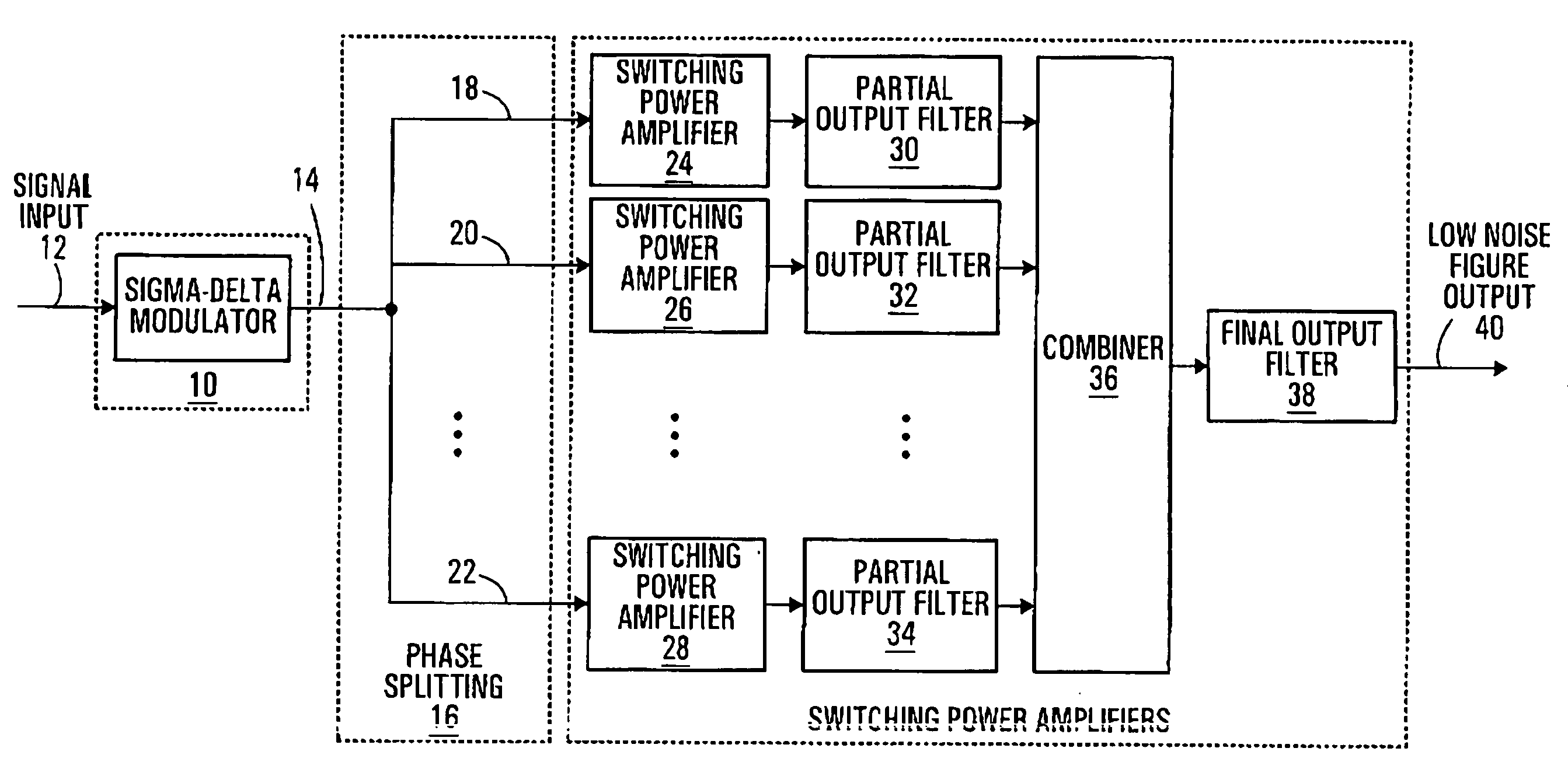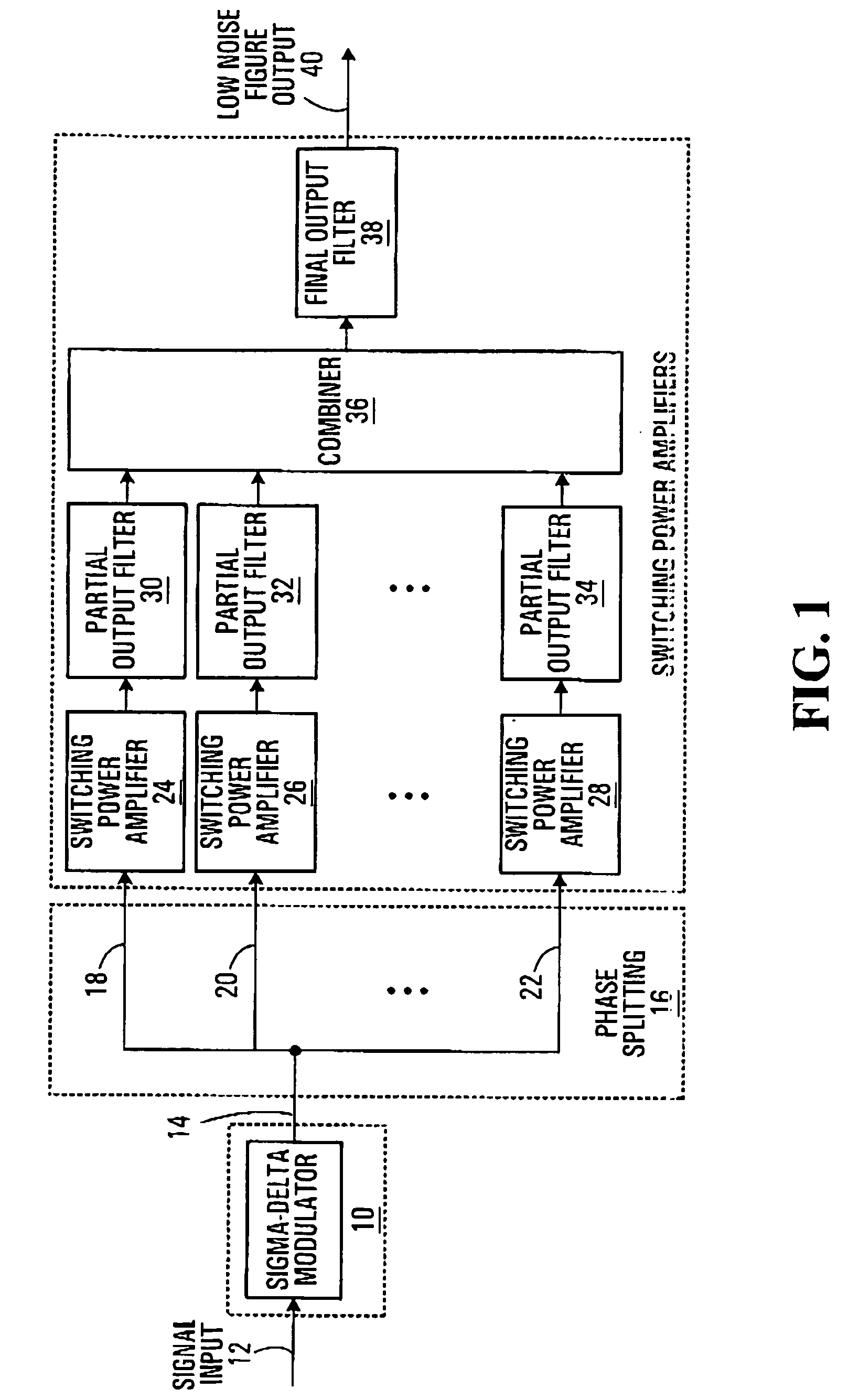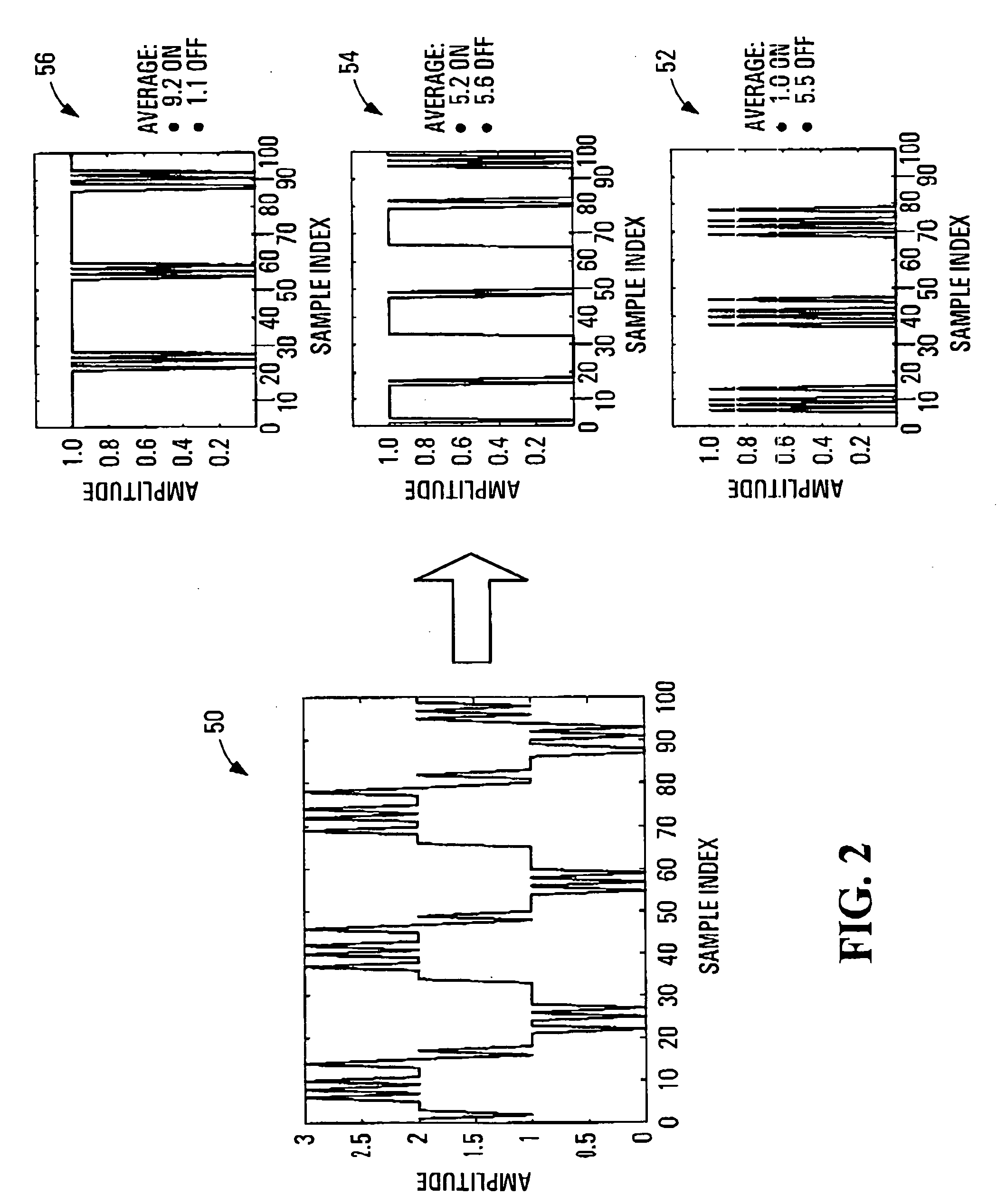High-efficiency amplifier, converter and methods
a converter and high-efficiency technology, applied in the direction of amplifiers, dc amplifiers with modulator-demodulator, semiconductor devices/discharge tubes, etc., can solve the problems of significant capital and operational expenses of power amplifiers, inability to support the power levels and input bandwidths required for rf applications, and two-level quantizers significantly limit achievable performance in terms of output noise level, signal-to-noise ratio (snr) and dynamic range, so as to reduce effect
- Summary
- Abstract
- Description
- Claims
- Application Information
AI Technical Summary
Benefits of technology
Problems solved by technology
Method used
Image
Examples
Embodiment Construction
[0036] Referring now to FIG. 1, shown is a block diagram of a high-efficiency amplification system using an N-level Sigma-Delta modulator, N≧3 as provided by an embodiment of the invention. The Sigma-Delta modulator 10 is connected to receive an input signal and produce an N-level Sigma-Delta modulated output signal 14. A phase splitting function generally indicated at 16 takes the Sigma-Delta modulated signal 14 and produces a set of N−1 “phases”18,20,22 (only three shown). The N−1 phases 18,20,22 collectively sum to equal the Sigma-Delta modulated signal 14 at any instant. Each of the N−1 phases 18,20,22 is connected to the input of a respective one of N−1 switching power amplifiers 24,26,28 (only three shown). The outputs of the switching power amplifiers 24,26,28 are connected to respective partial output filters 30,32,34 (only three shown). The outputs of the partial output filters 30,32,34 are connected to inputs of a combiner 36 having an output connected to a final output fi...
PUM
 Login to View More
Login to View More Abstract
Description
Claims
Application Information
 Login to View More
Login to View More - R&D
- Intellectual Property
- Life Sciences
- Materials
- Tech Scout
- Unparalleled Data Quality
- Higher Quality Content
- 60% Fewer Hallucinations
Browse by: Latest US Patents, China's latest patents, Technical Efficacy Thesaurus, Application Domain, Technology Topic, Popular Technical Reports.
© 2025 PatSnap. All rights reserved.Legal|Privacy policy|Modern Slavery Act Transparency Statement|Sitemap|About US| Contact US: help@patsnap.com



